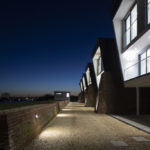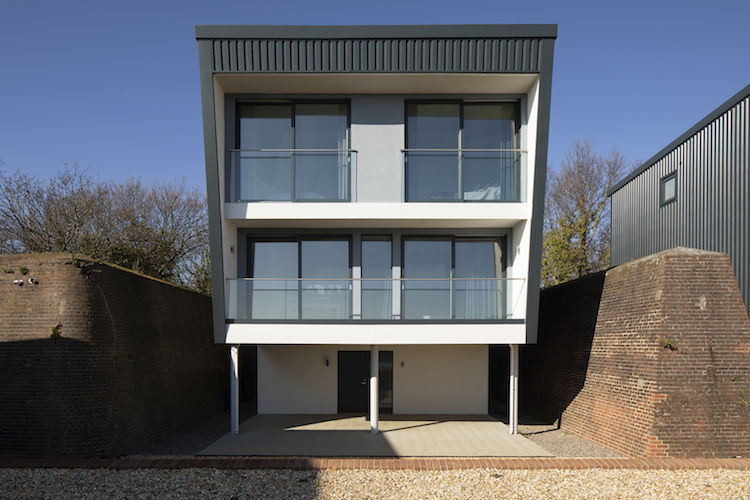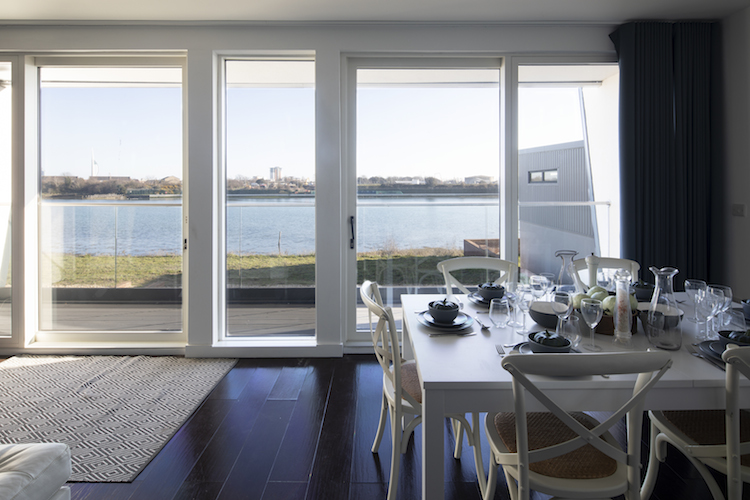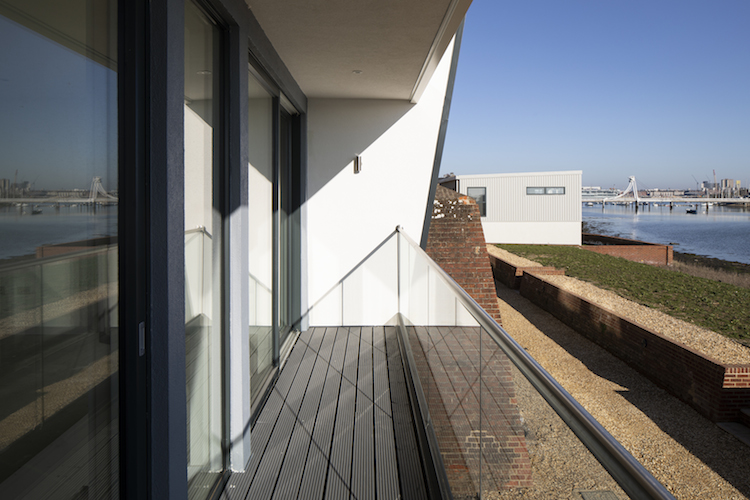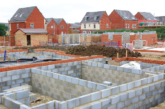PHPD reports on a striking new nine-home development inside a former naval fortress, and discovers how modern methods of construction helped deliver new homes in a historic setting.
Developing new homes on more challenging sites is not for everyone. However, housebuilder Elite Homes readily accepted the task following a visit to a historic waterfront site in Gosport which left Director David Craddock ‘inspired’.
After first visiting the Ordnance Yard site, which affronts Forton Lake and has views across Portsmouth Harbour, three years ago, the Arundel-based housebuilder has now bought to market a collection of nine eye-catching new homes.
The site itself presented numerous challenges. Not only is it sandwiched between the water’s edge to the front which is a Special Protection Area for birds and wildlife and a nature reserve immediately to the rear, it is also located inside a historic formal naval fortress.
The Ordnance Yard site is part of a wider area known as Priddys Hard. An iconic area of Gosport, it was a fort in the 1750s, it later evolved into a gunpowder magazine and a site where munitions were manufactured – a role which it sustained throughout the first and second world wars, until its decommissioning in the 1970s. While part of the site has previously been re-developed, much of it remains vacant and in a state of decay.
Consequently, the delivery of the new homes required a close working relationship, not only with the local authority – Gosport Borough Council; both the conservation officer and the planning department– but also English Heritage, Natural England and the owners of the site, Portsmouth Naval Base Property Trust, IOW and Hampshire Wildlife Trust and the Environment Agency. After navigating through archaeological, ecological, sustainability and conservation issues – whilst surrounded by listed structures – Elite Homes used offsite manufacturing to create a collection of new homes that are both striking and seem to ‘fit’ into their historic setting.
From his very first visit, David Craddock recognised its huge potential – not only as a site for modern new homes, but also to enable wider redevelopment throughout Priddy’s Hard. “The site was a once in a lifetime opportunity to create some unique homes in an unrivalled setting that could act as the catalyst for the regeneration of the whole Priddy Hard Peninsula.”
Recent history
Elite Homes and John Pardey Architects embarked on the derelict site’s regeneration after an attempt by a previous developer, to build nine homes and demolish its six shell filling rooms and associated structures, failed. Their new vision has resulted in a unique, modern development that also reflects the site’s naval heritage. Six open-fronted homes, constructed using a closed panel system built in the Isle of Wight, and clad in metal with a battleship grey tone, ‘float’ between giant blast walls – a legacy from the location’s former role.
Bookending the development are two elevated houses. Occupying the sites of two former Trotyl (TNT) melting room structures, the homes – clad in a lighter grey metal – also ‘float’ above a continuation of the existing blast walls.
The final house, which sits squarely on the ground, occupies a central location on the former footprint of the shell emptying room towards the site entrance where it acts as a gatehouse to the development.
Specification
The new homes include open plan kitchen / living areas on the first floor of the three storey structures, with floor to ceiling glazing to take advantage of the inspiring views of Portsmouth harbour. The homes feature energy-efficient air source heat pumps, significant levels of insulation and exceed building regulation levels for airtightness. We visited on a cold blustery day and inside the homes were warm and the sense of quiet and calm was particularly noticeable.
David Craddock noted: “Together with our architect we had to be incredibly innovative and versatile in our thinking.” A further example of this is an on-site drainage and sewage system, which converts wastewater into potable drinking water, which was installed to enhance the development’s sustainability.
Industry recognition
The scheme has already been highly commended at this year’s RTPI South East Awards for Planning Excellence in the ‘Excellence in Planning for Homes’ category and it is a Finalist in the RTPI National Awards for Excellence in Planning for Heritage and Culture category, along with being considered for further national accolades.
Commenting on the recent award, David Craddock, Director at Elite Homes, said: “We’re absolutely delighted that Ordnance Yard received a commendation. The RTPI awards are revered throughout the industry and the competition was fierce. Ours was the only private housing development to win a south east award. The award is testament to the hard work and vision of everyone at Elite Homes and John Pardey Architects. All involved are rightly proud with what they achieved with this remarkable development.”
Future development
Following the Ordnance Yard development, Elite Homes has been granted planning permission to carry-out a wider regeneration of Priddy’s Hard. Phase one of the £11million scheme includes the creation of 30 homes. Due to the approval of the first phase of the works the Portsmouth Naval Base Property Trust has secured a £2m grant from the Heritage Lottery Fund that will facilitate the refurbishment of several Grade 2 Listed buildings, including a new Costal Forces museum, a micro-brewery and Gastro Pub.
The housebuilder has a 999 year lease on the site, which remains owned by Portsmouth Naval Base Property Trust. The capital receipts from the development received the Trust will be used to restore and maintain many other significant structures for which the Trust is responsible.
David Craddock predicts that Elite Homes will be on the site at Priddy’s Hard for over four years, looking to deliver around 20/30 units a year – a number which he feels is sustainable for both the business and the local area. David concluded: “We are delighted to be involved in the regeneration of such an important historical landmark. This demonstrates what a collaborative approach between all stakeholders can produce if there is a willingness to compromise to facilitate development. I would like to think that others would take this pragmatic approach as we would resolve a lot of the issues we have in obtaining planning in areas of historical significance.”

